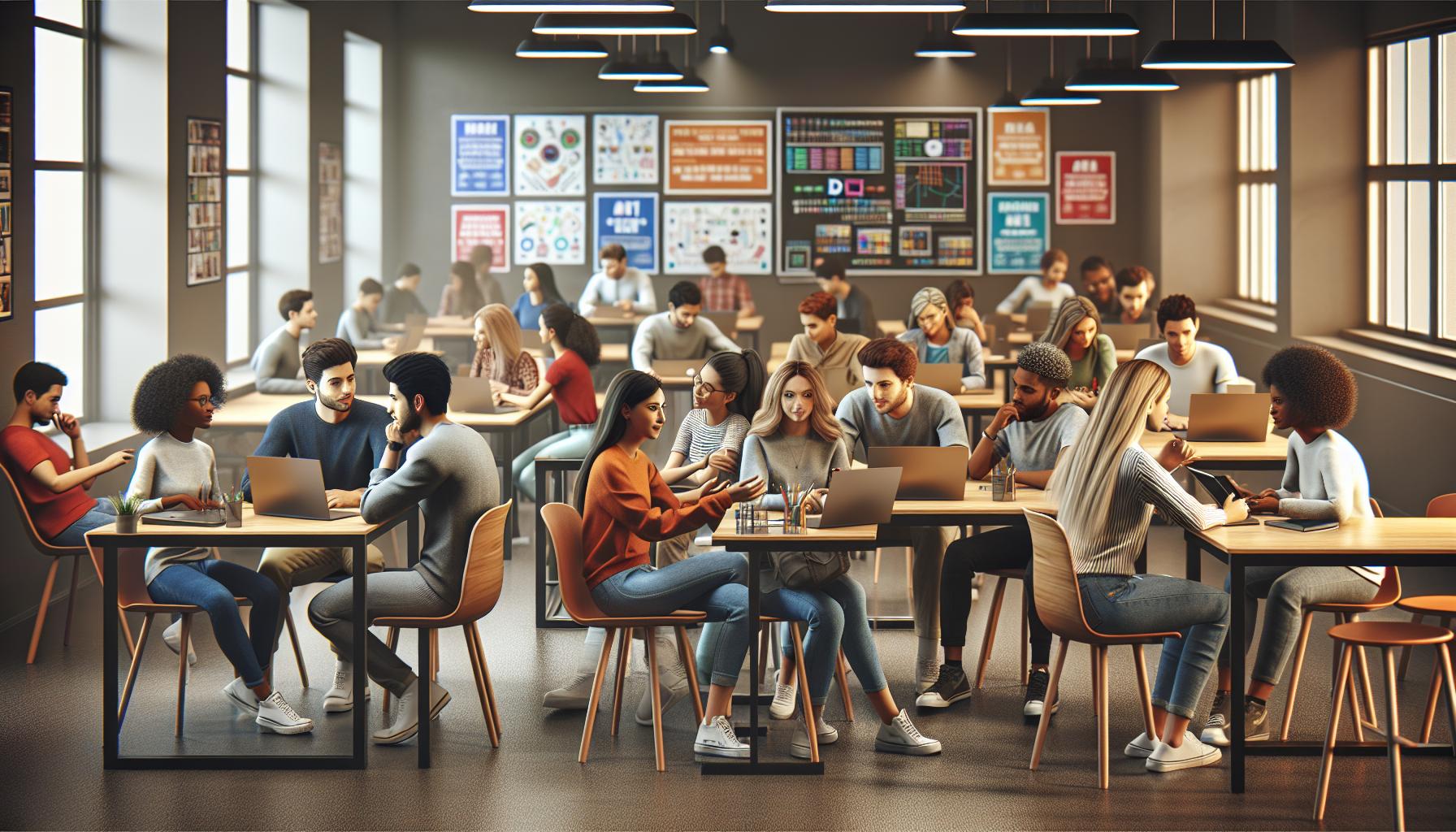As I dive into the fascinating world of artificial intelligence, I can’t help but notice the striking similarities between how AI learns and how we, as humans, absorb knowledge. Both processes involve gathering information, recognizing patterns, and adapting based on experiences. It’s intriguing to think that the algorithms driving AI are mimicking our own learning journeys.
Just like I might study for a test or pick up a new skill, AI systems rely on data to train and improve. They analyze vast amounts of information, learn from mistakes, and refine their approaches over time. By exploring these parallels, I’ll uncover how understanding AI’s learning methods can enhance my own learning strategies and open up new avenues for growth.
Key Takeaways
- Similar Learning Processes: AI and humans share fundamental learning processes, including information gathering, pattern recognition, and adaptation based on experiences.
- Machine Learning Fundamentals: Machine learning relies on data analysis and pattern identification, akin to how humans learn through practice and feedback.
- Role of Algorithms: Algorithms serve as structured frameworks for both AI and human learning, guiding the acquisition of knowledge systematically.
- Importance of Experience: Experience and adaptation are crucial for both learning methods, as both rely on feedback loops to improve and refine strategies.
- Feedback Mechanisms: Feedback is essential in enhancing both AI algorithms and human learning, allowing for continuous growth and optimization.
- Implications for Education: Insights from AI learning can inform educational tools and methods, offering personalized learning experiences tailored to individual needs and enhancing critical thinking skills.
How Are The Ways AI Learns Similar to How You Learn?
AI learning mirrors human learning through information processing, pattern recognition, and experiential adaptation. Delving into the specifics reveals how these processes function in artificial intelligence.
Machine Learning Basics
Machine learning forms the backbone of AI learning. This process involves feeding large datasets into algorithms, where the system analyzes and identifies patterns. I compare this to how I absorb information. For instance, completing practice problems in math helps me recognize trends in solving equations. Similarly, when an AI encounters similar data multiple times, it refines its predictions and decisions based on outcomes. Over time, both AI and I become more proficient through repetition and feedback.
The Role of Algorithms
Algorithms act as the instructional framework for machine learning. Each algorithm transforms data into actionable insights. I see algorithms like a structured study plan that guides me through learning topics systematically. For example, when I study a new language, I follow grammar rules and practice vocabulary, creating a mental map of knowledge. In AI, algorithms analyze input data, learn from it, and improve accuracy. Thus, the structured approach both I and AI use enables targeted progress and enhances overall learning outcomes.
Human Learning Processes

Human learning involves complex processes that reflect both cognitive development and adaptation through experiences. Exploring these aspects provides insight into how I acquire knowledge and skills.
Cognitive Development
Cognitive development refers to the progression of thought processes from childhood through adulthood. I build cognitive skills by engaging with the environment, which includes problem-solving activities and critical thinking exercises. For instance, solving puzzles enhances logical reasoning and promotes understanding of abstract concepts. This gradual growth parallels machine learning, where algorithms enhance their capabilities by processing increasing amounts of data. Just as I synthesize information from various experiences, AI models refine themselves by analyzing patterns in vast datasets.
Experience and Adaptation
Experience plays a crucial role in my learning journey. As I encounter different scenarios, I adapt my strategies based on previous outcomes. For example, if I face difficulties in a subject, I modify my study techniques to improve retention. This iterative process mirrors how AI learns from errors, adjusting its algorithms to optimize performance. Both learning methods, whether human or machine, rely on feedback loops, reinforcing correct behaviors while addressing mistakes. By capitalizing on experiences, I and AI ensure continued growth and enhancement in our respective domains.
Similarities Between AI and Human Learning

AI and human learning share fundamental processes, particularly in pattern recognition and feedback mechanisms. Both systems thrive on data and experience.
Pattern Recognition
Pattern recognition plays a crucial role in both AI and human learning. I analyze situations and identify recurring themes, such as recognizing symbols in math problems. Similarly, AI systems process massive datasets to detect trends and anomalies. Techniques like image recognition algorithms work similarly to how I mentally categorize objects, enabling both humans and machines to make informed decisions based on observed patterns.
Feedback Mechanisms
Feedback mechanisms form another parallel between AI and human learning. I often receive feedback from peers, teachers, or self-assessments, allowing me to refine my approach and improve outcomes. AI operates through feedback loops, adjusting algorithms based on performance data. For instance, reinforcement learning algorithms update strategies upon receiving rewards or penalties, akin to how I modify my behavior after understanding what works and what doesn’t. This cyclical evaluation fosters growth and adaptability in both learning processes.
Implications of These Similarities

The similarities between human and AI learning processes significantly impact educational methods and AI applications. These implications reveal opportunities for both domains to improve through mutual insights.
Enhancing Educational Tools
I observe that educational tools can evolve by incorporating AI’s learning methodologies. For instance, adaptive learning platforms utilize algorithms that adjust content based on individual performance, akin to how I adapt my study approach. These platforms feature personalized learning paths that engage students by recognizing their strengths and weaknesses, mimicking feedback loops present in human learning. Furthermore, gamified learning experiences leverage AI pattern recognition, offering challenges tailored to enhance critical thinking skills. As a result, learners receive targeted support, encouraging deeper engagement and mastery of subjects.
Improving AI Applications
I recognize that insights from human learning can refine AI applications. AI systems benefit from understanding human cognitive strategies, such as employing analogical reasoning or collaborative problem-solving techniques. For example, reinforcement learning algorithms can implement techniques found in social learning, where they observe and learn from the actions of others. This can lead to more efficient decision-making processes in AI systems. Moreover, integrating human-like feedback mechanisms can enhance how AI algorithms adjust based on real-time data, allowing them to become more responsive and versatile in diverse environments. Hence, as AI learns from human processes, it can become more effective in solving complex problems across various domains.
Understanding the similarities between how I learn and how AI learns opens up fascinating insights into both processes. Just like I gather information and adapt based on experiences AI does the same through algorithms and data. This connection not only enhances my personal learning strategies but also informs how educational tools can evolve.
By recognizing these parallels I can leverage AI’s methodologies to improve my problem-solving skills and critical thinking. The more I explore these relationships the more I see opportunities for growth in both my learning journey and the advancements in AI applications. Embracing this knowledge can lead to a more effective and responsive approach to learning in our increasingly digital world.

